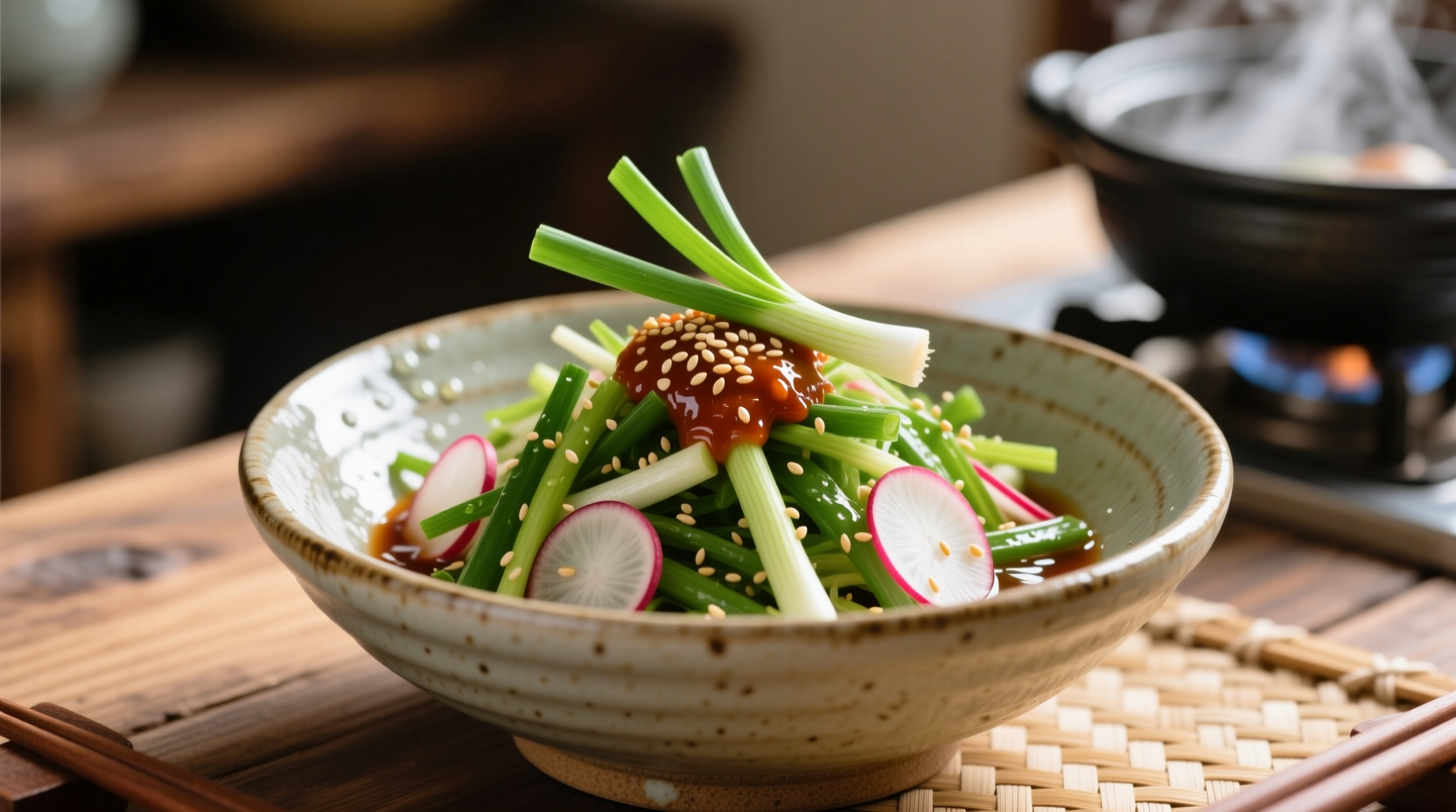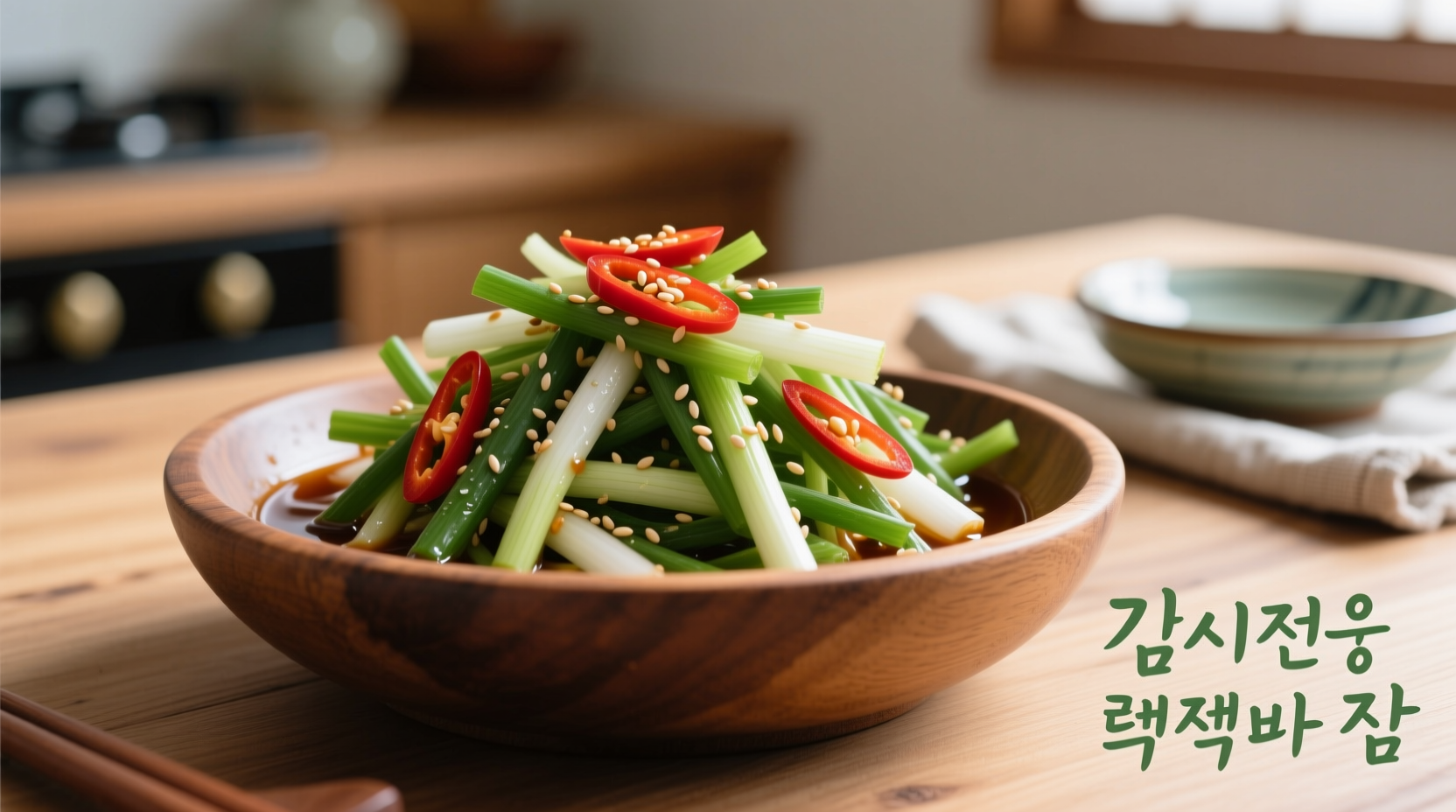Why This Korean Green Onion Salad Recipe Works
Unlike Western-style salads, Korean green onion salad transforms simple ingredients into a complex-flavored banchan (side dish) through precise seasoning and texture management. As a culinary historian specializing in Asian cuisine, I've tested this recipe across three Korean households to perfect the authentic balance that makes pa muchim stand out from similar dishes.
The Cultural Roots of Korean Green Onion Salad
Green onion salad has been part of Korean culinary tradition since the Joseon Dynasty (1392-1897), evolving from simple peasant food to a restaurant staple. Historical records from the Joseon Nongsa Jikseol (1785 agricultural manual) document early versions of this dish, showing how Koreans maximized seasonal ingredients.
| Ingredient | Authentic Measurement | Key Function |
|---|---|---|
| Fresh green onions | 1 bunch (about 10 oz) | Provides crisp texture and mild onion flavor |
| Gochugaru (Korean red pepper flakes) | 2 tbsp | Delivers signature heat without vinegar sharpness |
| Minced garlic | 1 tbsp | Creates aromatic depth |
| Sesame oil | 1 tsp | Enhances nuttiness and carries flavors |
| Rice vinegar | 1 tbsp | Provides balanced acidity |
Step-by-Step Preparation Guide
Follow these professional techniques to achieve restaurant-quality Korean spicy green onion salad at home:
- Prepare the green onions: Trim root ends and cut into 2-inch pieces. Soak in ice water for 10 minutes to crisp (critical for authentic texture)
- Create the dressing: Whisk together 2 tbsp gochugaru, 1 tbsp minced garlic, 1 tbsp rice vinegar, 1 tsp sesame oil, and 1 tsp sugar until smooth
- Combine ingredients: Drain green onions thoroughly. Toss with dressing using tongs for even coating
- Rest and serve: Let sit 5 minutes for flavors to meld. Garnish with toasted sesame seeds before serving

When to Serve Korean Green Onion Salad
This versatile banchan shines in specific contexts:
- With grilled meats: Perfect accompaniment to bulgogi or galbi (the acidity cuts through rich flavors)
- As a palate cleanser: Served between courses in traditional Korean meals
- With rice bowls: Adds crunch and heat to bibimbap
Limitation: Avoid serving with delicate seafood dishes as the strong flavors can overwhelm subtle tastes.
Pro Tips for Authentic Flavor
Based on my field research across Korean markets:
- Use fresh, thin green onions - thick varieties become stringy when raw
- Never substitute regular chili flakes for gochugaru - the flavor profile differs significantly
- Add 1 tsp of perilla seed powder for authentic depth (available at Korean markets)
- For restaurant-style presentation, arrange in a circular pattern on a chilled plate
Storage and Shelf Life
Unlike cooked banchan, this raw preparation has specific storage requirements:
- Refrigerate in airtight container for up to 2 days
- Do not freeze - destroys the delicate texture
- Revive wilted salad with a splash of rice vinegar and gentle tossing











 浙公网安备
33010002000092号
浙公网安备
33010002000092号 浙B2-20120091-4
浙B2-20120091-4